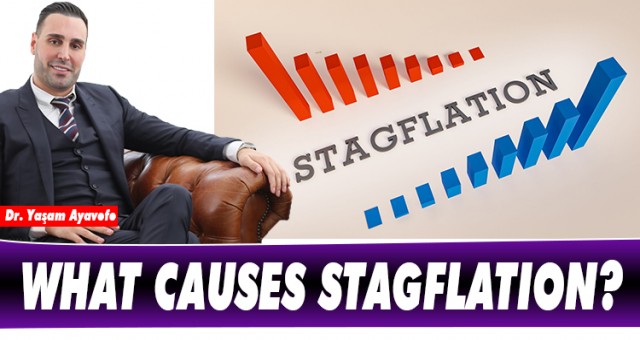Stagflation term was used in 1960 for the first time. It was used by a politician named Iain Macleod from United Kingdom while he was speaking in the House of Commons; he was talking about inflation and stagnation, the he called it ‘stagnation situation’. It was later used again in the 1970s following the oil crisis in US. At 1970s; inflation doubled and unemployment hit 9% by May 1975.
Stagflation is an economic phenomenon which is defined by considerable inflation, almost no growth, and really serious levels of unemployment. Let’s focus on 1970s; the dominant economic theories suggested that the inflation to be always increased when the unemployment rate was low and to be decreased when the unemployment rate was high. Fort his reason, the economists had to refine their economic theories since.
WHAT IS STAGFLATION?
As it had been mentioned before, Stagflation is a term about a significant inflation, highly levels of unemployments and almost no growth of the economy.
Stagflation;
- Describes an economy which is experiencing a simultaneous increase in the inflation and stagnation of economic output.
- Can not be easily explained that how it’s occured by prevailing the economic thory in time.
- In 1970s, during the oil crisis; stagflation was extensive but in the recent times, it hasn't been a problem. Governments have been working closely with central banks to control inflation without causing any economic output to decrease and refrain policies that are likely to produce stagflation.
WHAT CAUSES STAGFLATION?
There are numbers of theories about what causes the stagflation which have suggested by economists. By the way, not all economists agree about what causes the stagflation. Hence, most of them agree the stagflation is a problem.
Causes Which Make The Stagflation Is a Problem;
- Supply Shock
- Bad Monetary Policies
- Differential Accumulation
- Demand-Pull
- Cost-Push
- End of the Gold Standard
WHAT ARE THE CONSEQUENCES OF ECONOMIC STAGFLATION?
When the stagflation occurs the country, which has stagflation, faces some serious problems. While these problems are happening internationally at the same time, they may create individual and social problems in the country too.
It is thought that the cause of stagflation is the poor adjustment of the structural unemployment rate, the inflexibility of wages downwards, the high price policies of firms under imperfect competition, the intensification of the struggle for income sharing, the wrong economic policies applied and external economic factors.
If a country has the stagflation, that means;
- Country has a serious unemployment issues,
- Inflation in the country increases continually,
- No economical growth,
- Country’s economical status is almost stops,
- Export ratio decreases while import ratio is increasing.
WHAT CAN BE DONE TO PREVENT THE STAGFLATION?
In periods when the economy is in high inflationary tendencies along with recession, it becomes difficult for the bodies responsible for carrying out the economic policy to make a decision.
Generally, to prevent or stop the stagflation; countrial governments may consider to fight against the inflation or enforce the economical politics. But to implement both figthing against the inflation and enforcing an economical policy can not be solved easily because both ways are differs with eachother.
On the one hand, an expansionary strategy should be implemented to eliminate unemployment, on the other hand, it seems appropriate to adopt a contractionary strategy in order to reduce the price increase rates.
WHICH COUNTRIES EXPERIENCE THE STAGFLATION?
The countries;
- Which choose wrong economic politics,
- Which has a serious unemployment issues,
- Which has the increase of the inflation and interest ratio
- Which has seriously decrease in the exportigs and increase in the importings
However, it may be considered to combine the expansionary fiscal policy through tax cuts with the contractionary monetary policy.
- Hence, not all economists believe that the oil embargo and oil shortages were the primary reason for 1970s stagflation. Today, many economists now believe that the growth of the money supply by the Federal Reserve was the main factor in the stagflation crisis of the 1970s.
Yaşam Ayavefe




























Yorum Yazın